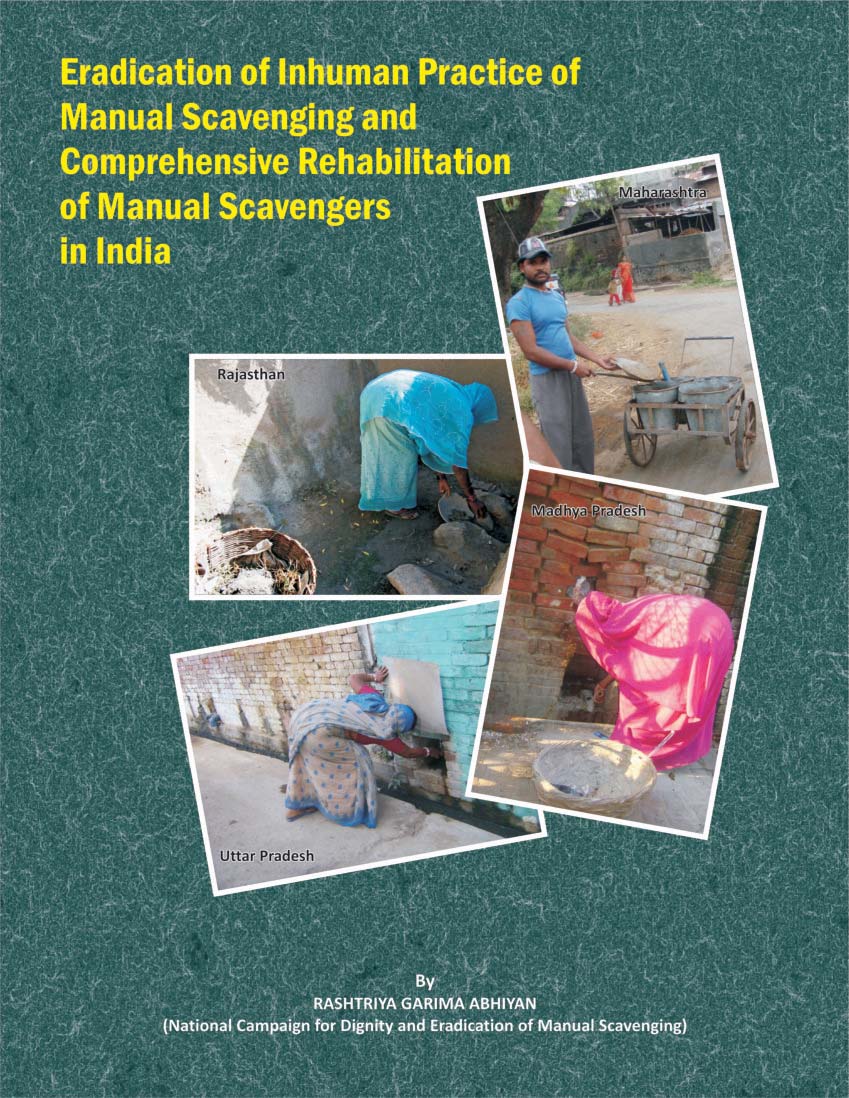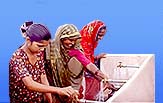/topics/voluntary-citizen-or-civil-society-sector
Voluntary Citizen or Civil Society Sector
‘SACOSAN IV special issue’ - WASH news and policy update: Bi-monthly e-newsletter of India WASH Forum, Issue 17, March 2011
Posted on 22 Apr, 2011 05:31 PM- SACOSAN IV Sri Lanka
The South Asia Conference on Sanitation (SACOSAN IV) is scheduled for Sri Lanka from 4th to the 7th April in Colombo. The Conference is a unique bi-annual inter-ministerial meeting that has an exclusive focus on sanitation and hygiene in south Asia.
Inviting endorsements on a submission to the WGEEP for declaring the rivers in the Western Ghats as Ecologically Sensitive Areas (ESAs)
Posted on 22 Apr, 2011 12:58 PMDear friends,
We are all aware of the immense ecological, cultural and social significance of rivers originating and flowing through the Western Ghats. This includes source regions of East flowing rivers like Krishna, Godavari and Cauvery and the source, riparian and estuarine region of all West flowing rivers.
We are lucky to still have some of the very few and very rare 'free flowing rivers' in the country. Most of the rivers in our country have been dammed and diverted. This has changed the ecological and physical characteristics of these rivers completely. Today, it is difficult for us to visualise the amazing range of ecological goods and services that an undammed, free flowing river can provide. Some such rivers in the Western Ghats are Shastri, Aghanashini, Gargai and Seetha Nadi.
‘Revival of Siddh Baba Kodiya talaab’ - Janhit Foundation's e-newsletter of March 2011
Posted on 22 Apr, 2011 11:39 AMThe Janhit Foundation's newsletter of March 2011 focuses on the following topics:
Eradication of inhuman practice of manual scavenging and comprehensive rehabilitation of manual scavengers in India – A report by Rashtriya Garima Abhiyan
Posted on 21 Apr, 2011 09:15 PM The practice continues in the country in spite of efforts of several people, implementation of government schemes such as the National Scheme for Liberation and Rehabilitation of Scavengers since 1992 and Self Employment Scheme
The practice continues in the country in spite of efforts of several people, implementation of government schemes such as the National Scheme for Liberation and Rehabilitation of Scavengers since 1992 and Self Employment Scheme
Energy from Water
Posted on 21 Apr, 2011 10:49 AM
An example technology is pico-hydro that uses local streams as a resource.
- The technology is transferred as an asset to households of farmers with access to streams, in the Western Ghats region.
- Most critically, the households decide the allocation of water between electricity generation and irrigation - they manage their demand for electricity based on water availability. The entire system retrofits into their current irrigation infrastructure.
- At the same time, there is an entire value chain of enterprises that develop the technology and deliver it to the farmer's doorstep, integrating access to MNRE subsidies and loans as necessary.
Development of training module for water safety plan in urban areas - A document by ESCI
Posted on 20 Apr, 2011 03:48 AMA Water Safety Plan (WSP) is an improved risk management tool designed to ensure the delivery of safe drinking water. It identifies hazards, means to control them, means and actions to identify loss of control and its restoration. It comprises system assessment and design, operational monitoring and management plans (including documentation and communication). Water quality guidelines have been issued by the WHO.
Call for applications for DFID-ESRC Growth Programme - Apply by 26th May, 2011
Posted on 18 Apr, 2011 11:24 AMThe Department for International Development (DFID) and the Economic and Social Research Council (ESRC) are partnering in a new programme on economic growth in developing countries. The DFID/ESRC Growth Programme (DEGP) will fund world class scientific research on issues relating to inclusive economic growth in Low Income Countries (LICs), with high potential for impact on policy and practice.
Paddy and water management with the System of Rice Intensification (SRI) – A special issue of the journal "Paddy and Water Environment"
Posted on 17 Apr, 2011 10:30 AM This brings together the results of formal research on SRI in a number of countries (Part I) and also reports on initiatives by government agencies, NGOs, universities, or the private sector, bringing knowledge of SRI to farmers in a wide range of agroecological circumstances (Part II). It has six articles and nine technical reports from Afghanistan, China, the Gambia, Kenya, India, Indonesia, Iraq, Mali, Pakistan, Panama, and Thailand as well as several review articles.
This brings together the results of formal research on SRI in a number of countries (Part I) and also reports on initiatives by government agencies, NGOs, universities, or the private sector, bringing knowledge of SRI to farmers in a wide range of agroecological circumstances (Part II). It has six articles and nine technical reports from Afghanistan, China, the Gambia, Kenya, India, Indonesia, Iraq, Mali, Pakistan, Panama, and Thailand as well as several review articles.
The System of Rice Intensification (SRI), developed in Madagascar almost 30 years ago, modifies certain practices for managing plants, soil, water, and nutrients with the effect of raising the productivity of the land, labor, and capital devoted to rice production. Certain production inputs are reduced—seeds, inorganic fertilizer, water, and fuel where water is pumped—with increased yield as a result.
Operation and maintenance for rural water supplies – A manual by Department of Drinking Water and Sanitation and the Water and Sanitation Program of World Bank
Posted on 17 Apr, 2011 07:23 AM This Operation and Maintenance (O&M) manual for rural water supplies by the Department of Drinking Water And Sanitation and Water and Sanitation Program of the World Bank complements their Gram Panchayat Handbook released in 2010 . It takes into account the current aspirations and challenges facing the sector, and builds on the framework already set out in the National Rajiv Gandhi Drinking Water Programme (NRDWP) and Strategic Plan 2011-2022.
This Operation and Maintenance (O&M) manual for rural water supplies by the Department of Drinking Water And Sanitation and Water and Sanitation Program of the World Bank complements their Gram Panchayat Handbook released in 2010 . It takes into account the current aspirations and challenges facing the sector, and builds on the framework already set out in the National Rajiv Gandhi Drinking Water Programme (NRDWP) and Strategic Plan 2011-2022.





